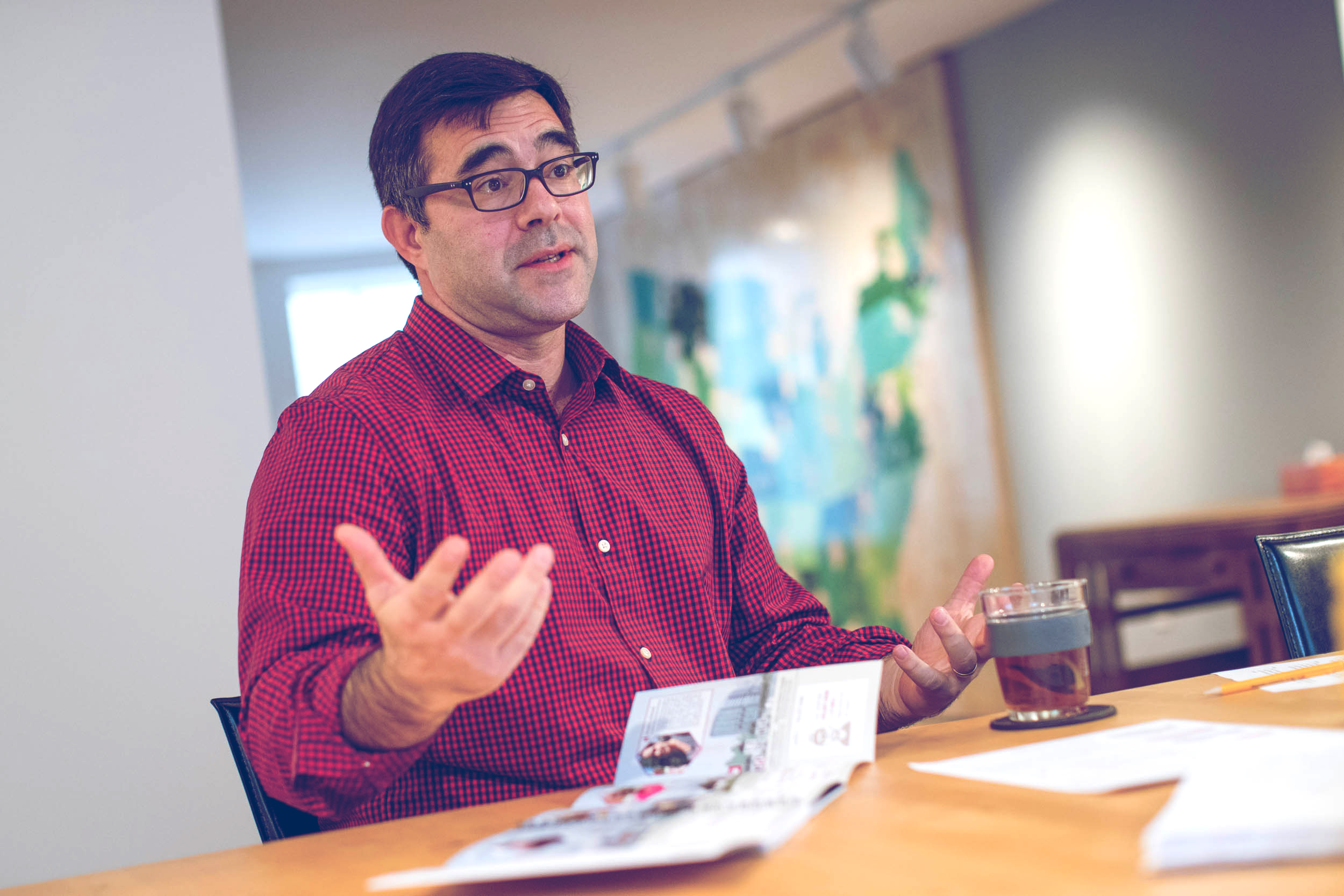The world is becoming more and more urban. As more people move to cities, they expand and, in some cases, begin to bump into one another, as is the case along the northeastern corridor of the United States, from Washington, D.C. to Baltimore and on into New York City and Boston. Some estimates predict that by 2050, two-thirds of the world’s population will live in urban environments.
With this growing urbanization comes questions: What does it take for a city to thrive? Is it economic growth or aesthetic beauty? Or is it robust political and civic life?
A team of urban specialists based at the University of Virginia says it is all of those things, and more.

Born as a research initiative of UVA’s Institute for Advanced Studies in Culture, the “Thriving Cities” project has developed a new way to assess the health of urban areas and is building a free toolkit anyone can use to take the pulse of their home.
“Thriving Cities is meant to help cities and communities build their civic capacities to work for the thriving of every member of their community,” project director Joshua Yates said.
Speaking from Thriving Cities’ offices on Charlottesville’s Downtown Mall, Yates, a research assistant professor of sociology, said, “The first thing we did was create the framework – this is the frame or the lens that we look through when we look at cities,” he said. This lens brings into focus not only individual elements of civic thriving, but the relationships between them. Drawing from insights rooted in the humanities, but engaging with a range of social and natural sciences, the model is organized around six realms of civic life, which Thriving Cities calls “endowments.” As Yates explained, “Like a financial endowment, they all have qualities that become the capital that produces human thriving, which accrues over time.”
Thriving Cities’ six endowments are:
- The Good, the realm of social mores and ethics;
- The True, the realm of human knowledge and learning;
- The Beautiful, the realm of aesthetics and design;
- The Just, the realm of political and civic affairs;
- The Prosperous, the realm of economic life; and
- The Sustainable, the realm of natural and physical health.
Yates said these six areas are not silos, but contain clusters of institutions that overlap and interact with one another in important ways. Brought together, they form the “Human Ecology Framework,” which Yates said helps researchers measure a city’s health by assessing the assets and deficits represented in each endowment.

Joshua Yates is the director of Thriving Cities, a University of Virginia initiative. (Photo by Sanjay Suchak, University Communications)
Yates said cities thrive when the six endowments work well together. Take, for example, the relationship between education and tax base. Well-funded schools do better than poorly funded schools. This example draws together two of the endowments: the realm of human knowledge and learning and that of economic life. By viewing a city through this human ecology lens, Yates said communities can generate specific insights that are distinct to individual cities.
Case Study: Richmond, Virginia
Virginia’s capital city, Richmond, recently went under the Thriving Cities lens. In 2015, the project commissioned University of Richmond professor Julian Hayter to produce a comprehensive profile of Richmond. The research drew on a huge range of data, from the number of public school students receiving free or reduced-price lunch to census figures and sources addressing Richmond’s relationship to the trans-Atlantic slave trade and Jim Crow-era segregation. (You can read the full profile here.)
“The city has only recently begun to come to terms with the relationship between extraordinary poverty and the region’s historical legacy of institutional racism,” reads the executive summary report of the city profile. “Yet Richmond’s principal asset, as it happens, is this recent acknowledgment of, and willingness to address, the city’s poverty crisis.”
Pastor Don Coleman, a resident of the city’s east end who is working with the Thriving Cities team, echoed hope for the days ahead and lauded Thriving Cities’ partnership in Richmond.
“This new initiative so fits with the fresh life that is beginning to be affirmed in the city of Richmond,” he said. “A new mayor, city council and school board show the hunger by citizens for real quantifiable change. This new initiative fits into the fresh energy for lasting change for all citizens of Richmond.”
The Jefferson Davis Corridor
With the help and input from the local community, Yates’ team recently launched a new project along the Jefferson Davis Highway corridor in South Richmond. The area has fallen on hard times over the last century, with shifts in industry and employment opportunities. The space has also recently undergone demographic shifts, with growing Latino communities at the south end of the corridor, as well as redevelopment at the north end.
“This area is entering a critical season of change,” Yates said. “It holds great promise, as well as the need for collaborative efforts to ensure everyone along the corridor has an opportunity to thrive. The potential for coordinated action is enormous, as there are already many good things happening in the community.”
A.J. Brewer, who owns Brewer’s Café in the Manchester neighborhood, agrees. “In this neighborhood, there are people from all backgrounds, black and white, living together, who want to make their community better for everyone. They want to be a part of the change that is happening,” he said.

Richmond native A.J. Brewer, pictured here with his 3-year-old son Parker, opened Brewer’s Café in 2015. (Photo courtesy of A.J. Brewer.)
Over the course of 2017, Thriving Cities will conduct asset mapping and create a community field guide to support the efforts and initiatives of local stakeholders and residents along the corridor.
Yates said the project draws heavily upon community guidance and involvement. “There is a big resident-driven component to this, because their voices are essential to the corridor’s thriving,” he said.
Indicator Explorer
The newest addition to the Thriving Cities toolkit is the Indicator Explorer. The free, interactive tool displays the 300 most popular indicators – measurable variables that provide information about the health and well-being of a community – from a sample of more than 100 indicator projects. Indicators span all areas of civic life, from education to job training, trash pickup to voting and health outcomes to traffic.
Each indicator in the Indicator Explorer is linked to academic research that supports its use in communities. For example, one-year residential stability – or living in the same house for more than a year – is strongly supported by academic research as an important part of building community trust, supporting mental health, strengthening family stability and children’s academic performance and reducing violent crime.
Eight UVA undergraduate and graduate students and academic experts outside the University completed the Indicator Explorer project. “A ton of work went into this,” Yates said.

Megan Juelfs-Swanson, Thriving Cities’ data analyst, led the Indicator Explorer project. (Photo by Sanjay Suchak, University Communications)
The team looked at how more than 100 community organizations use indicators in their work. One such group is the Capital Region Collaborative, a Thriving Cities partner. The group uses indicators to create a shared vision for Richmond across government, nonprofit and business groups, in order to improve quality of life across the Richmond region.
Yates said he is excited about the Indicator Explorer project. “At Thriving Cities, we’re committed to fostering scholarship that serves the common good in tangible ways. This tool is the first of many that we hope will translate the best scholarship coming out of the University for practitioners and community stakeholders alike,” he said.
His team is already working on a 2.0 version of the Indicator Explorer that will include new features like the ability to highlight the relationships and pathways that run between leading indicators. Users will also be able to map those pathways across neighborhoods using geo-coded data.
“In a rapidly urbanizing world,” Yates said, “this is an exciting moment to be doing this work. It is also a critical time, given the complex challenges we face. For most of us, it will be in the context of cities that we forge the future possibilities of human flourishing in our time. It is the scholarly and practical mission of Thriving Cities to contribute to this grand challenge.”
You can learn more about the Thriving Cities project by watching its video below.
Media Contact
Article Information
February 2, 2017
/content/thriving-cities-how-uva-and-civic-leaders-can-make-urban-life-great

